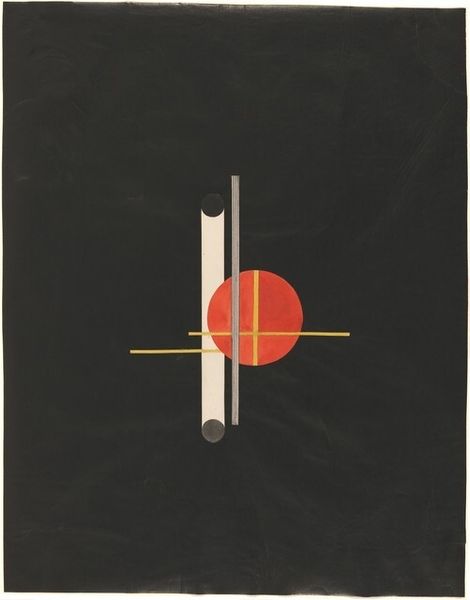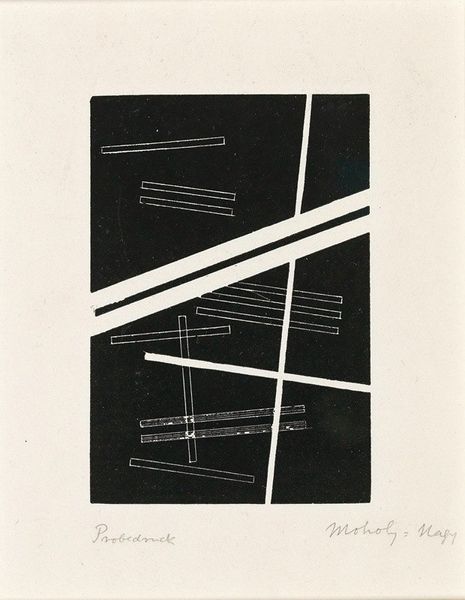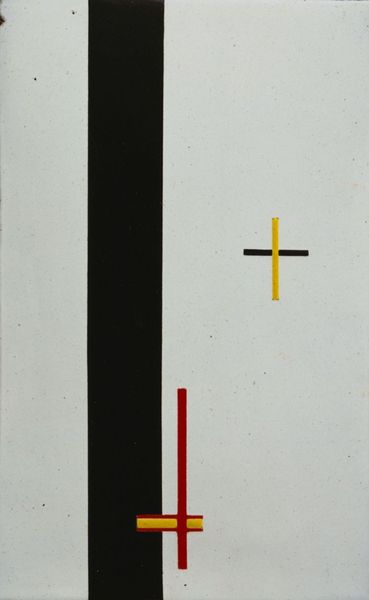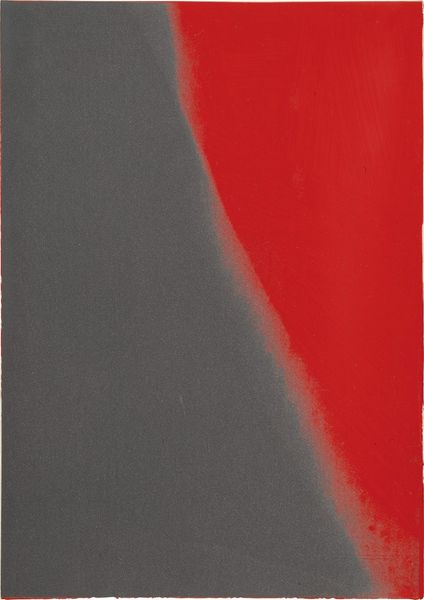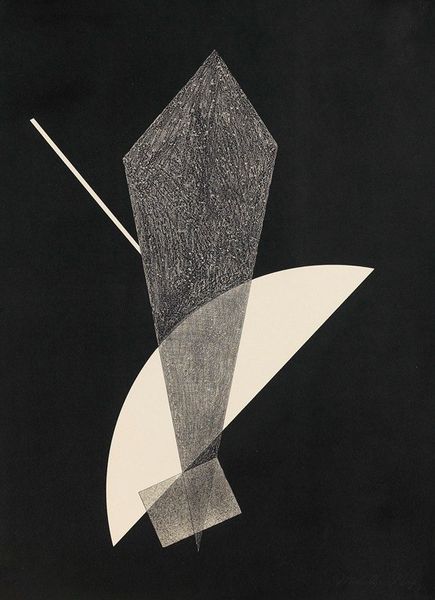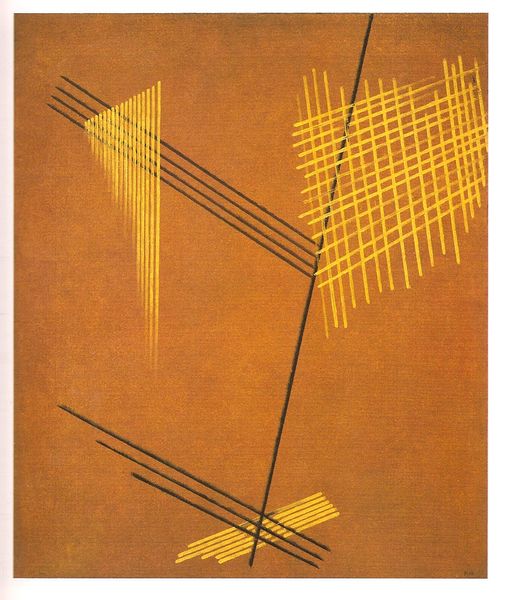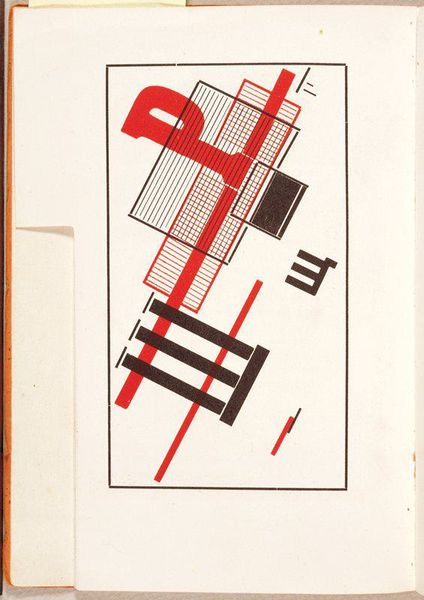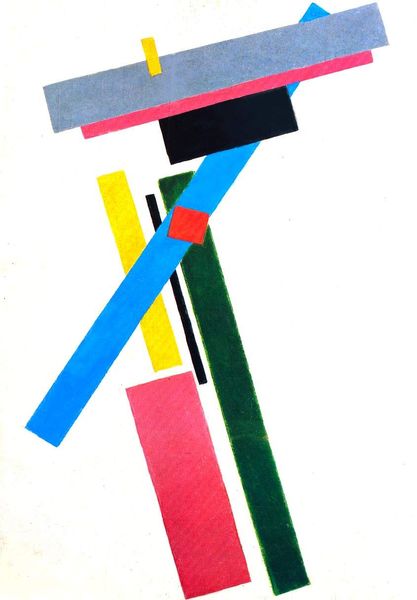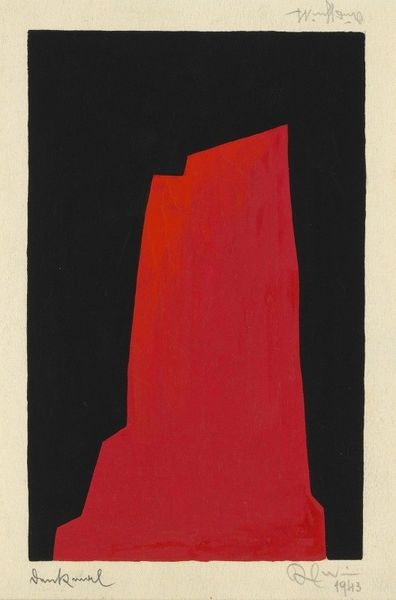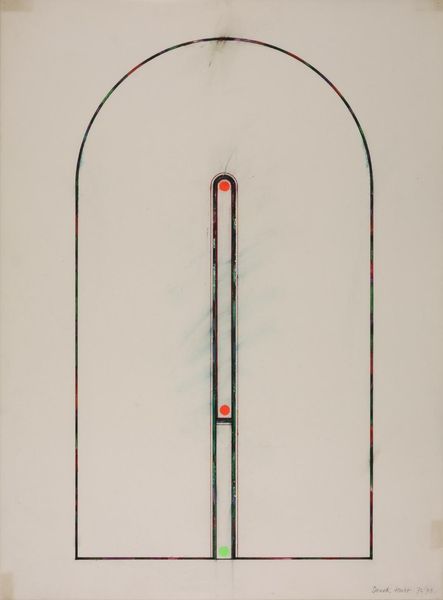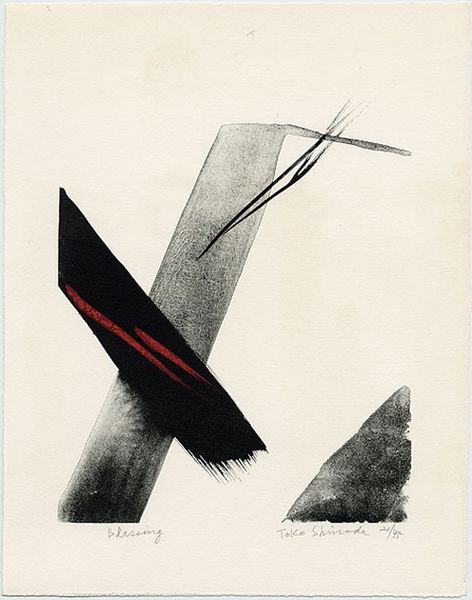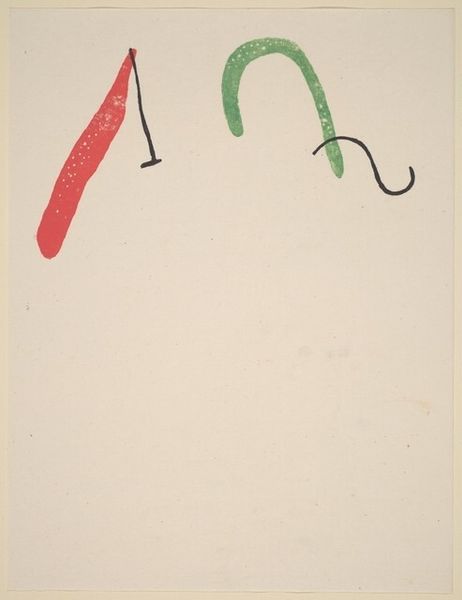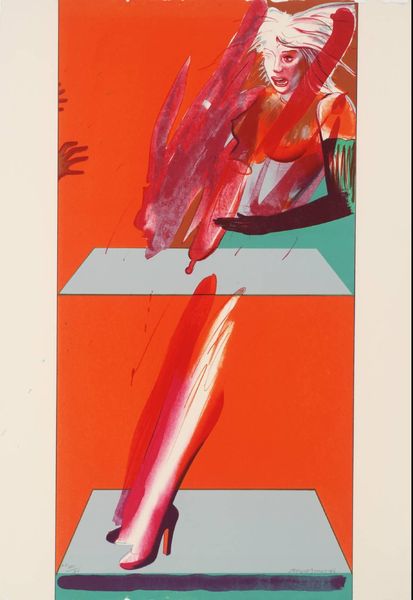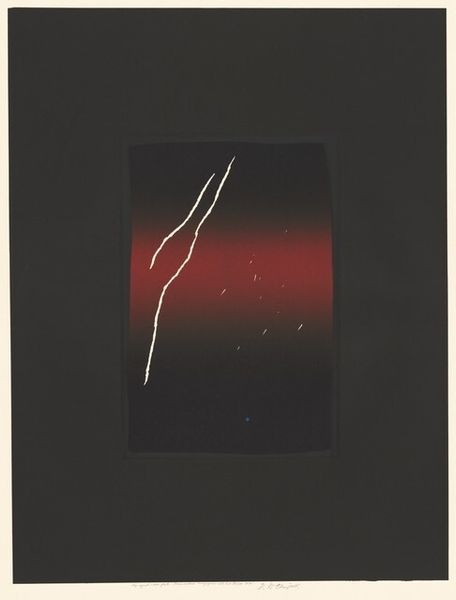
mixed-media, collage, paper
#
mixed-media
#
collage
#
stencil
#
constructivism
#
paper
#
abstract
#
form
#
geometric
#
abstraction
#
line
Copyright: Public Domain: Artvee
Editor: Here we have László Moholy-Nagy's "Collage with Three Elements," created in 1922 using mixed media and collage. I'm struck by the contrast – the boldness of the colored rectangles against the stark black background. How do you interpret this work? Curator: I see this collage as a powerful statement on the socio-political landscape of its time. Moholy-Nagy, deeply involved with the Bauhaus, was reacting to the machine age and its impact on human experience. Do you notice how the geometric shapes, though abstract, feel almost architectural or mechanical? Editor: Yes, definitely. They remind me of building blocks or even fragmented machine parts. Curator: Exactly! This fragmentation is key. Consider the historical context: the devastation of World War I, the rise of industrialization, and the anxieties surrounding rapid social change. The collage embodies this sense of a world being rebuilt, pieced back together. How does this relate to issues of identity, race or gender? Editor: That's interesting…perhaps the fragmented forms also speak to a fractured sense of identity in this new, rapidly changing world, forcing one to deconstruct conventional narratives and expectations about class and gender. Curator: Precisely. The collage format itself—the layering and juxtaposing—becomes a metaphor for the complexities of modern identity. We can link it with theories about the self as a collage: a composite of experiences and social constructs. Moholy-Nagy challenges viewers to engage critically with their own understanding of social structures. What's your takeaway? Editor: I hadn't considered the work in such a political context before. It’s empowering to think of these shapes not just as abstract forms, but as reflections on a society grappling with war, industrialization and questions about identity. Curator: Absolutely. The beauty of art lies in its ability to ignite conversations about social dynamics that affect gender and class. We begin to appreciate its power as social commentary.
Comments
No comments
Be the first to comment and join the conversation on the ultimate creative platform.
